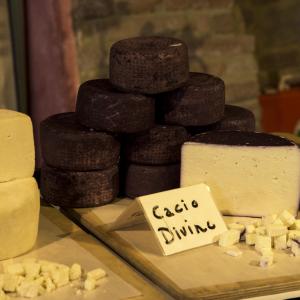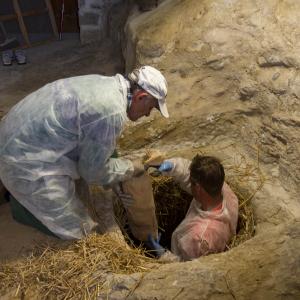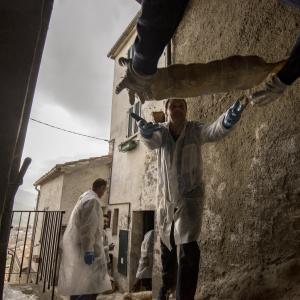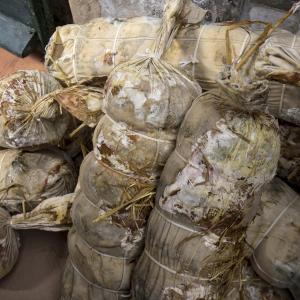Pits and granaries
Preserving food was imperative at a time when there were no refrigerators. Back in time, the people resorted to snowfields, ice houses, and there are many specimens still intact from the Malatesta period.
Moreover, there are the granaries built to store wheat and cereals, all you have to do is walk along the streets of the historic centers of San Giovanni in Marignano and Santarcangelo di Romagna.
Then there are the pits, sometimes excavated in tuffaceous soils, but above all in sandstone rocks, in which the cheese is preserved very well, indeed it is aged. It is what is called "fossa cheese" and it is considered a delicacy for the palate of gourmands and connoisseurs. This tradition has been around since ancient times and was painstakingly revived with scientific rigor in the 1970s/1980s. In the pits, the cheeses take on the aroma of wood, truffles, moss, from the environment where they are laid. The flavor ranges from sweet to spicy, to slightly bitter depending on the milk used and the pits themselves. Being buried for three months, from August to November, it comes out different, with a stronger and more decisive aroma, always edible.
That smell today is called fragrance.
To taste its flavor and view the pits, you need to go to Talamello in Valmarecchia where a special festival is held in November, called the Talamello Amber Fair, as the poet Tonino Guerra wished to call the cheese kept for three months in the pits, here there are about fifteen of them.
Also in Sant'Agata Feltria and Perticara, cavities are used for maturing, although the experts speak of refinement and not exactly pits.
In Valconca the tradition has been rigorously renewed, especially in Mondaino where on the third Sunday of November you can taste the freshly "pitted" cheese. And a very intense fragrance comes from the pits, so intense that it spreads throughout the entire villages that are the protagonists of the festivals; you become exhilarated when you smell it.
Fossa cheese is a mixed cheese, the quality of the milk determines its value, the animal species, their grazing regime and their rhythm of life play an indisputable role on the organoleptic properties. The tuffaceous pits play their part by starting a new process of fermentation, but the cheese must already carry within itself the qualities that the permanence in the pits will enhance with a particular flavor and aroma making them unique through the maturation characterized by microbiological, chemical, physical-chemical and enzymatic processes.
In this valley, in the past, fossa cheese in winter was often the only accompaniment to the piada or bread or the condiment for pasta. It is therefore understandable why the people of the districts nearby and far away climbed this hill to bring their cheese to be aged in the tuffaceous pits. With just a little filling you ate well; a little is enough of such a tasty cheese. Now that well-being has satisfied everyone's food needs, this treasure is being rediscovered. It is no longer appreciated as a side dish, but as a fragrance to give vigor to salads, to give grit to meat and to give a decisive touch to pasta. There are many recipes in which fossa cheese finds its place today. Its value lies in the fragrance.



